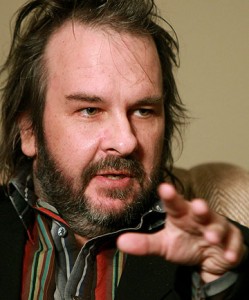 Peter Jackson’s grand experiment with 48-frames-per-second digital footage is just the latest in a long line of filmmakers pushing the technological envelope in Hollywood.
Peter Jackson’s grand experiment with 48-frames-per-second digital footage is just the latest in a long line of filmmakers pushing the technological envelope in Hollywood.
There’s been plenty of buzz about the upcoming film The Hobbit: An Unexpected Journey, but it’s not just about the movie itself. It’s also about the format the director Peter Jackson has decided to use, which he just defended in detail in a Facebook post yesterday. Normally, films are shot at 24 frames per second (fps), and have been for roughly 80 years. American television is broadcast at 29.97 fps, while European television is broadcast at 25 fps. Each of these have a unique look to which we’ve all grown accustomed.
What makes The Hobbit different is Peter Jackson’s method for shooting it. He has employed an array of high-resolution RED Epic cameras recording video at 5,120-by-2,700-pixel resolution, and at 48 fps (known in the industry, along with 60 fps, as High Frame Rate). Depending on your viewpoint, the result either looks more lifelike than ever before, or it seems oddly cold, and too much like digital footage from live sports channels or daytime television.
Source Material vs. Screen Refresh Rates
Earlier this year, some people who had attended CinemaCon 2012 in Las Vegas criticized a 10-minute broadcast of unfinished footage shown there at the time. As Jackson wrote in a much earlier Facebook post in 2011, with 24 fps film (digital or analog), “there is often quite a lot of blur in each frame, during fast movements, and if the camera is moving around quickly, the image can judder or ‘strobe.'”
Jackson argued that 48 fps does a lot to eliminate these issues, and looks especially good in 3D—another contentious topic in the film industry. According to Jackson, 48 fps resolves the eye strain issue people have experienced when viewing 3D, although he claims 48 fps also just looks better in 2D, as well. But many critics were less kind, with one Entertainment Weekly blog post saying the clips Jackson showed at CinemaCon “looked much more like visiting the set of a film rather than seeing the textured cinematography of a finished movie.”


